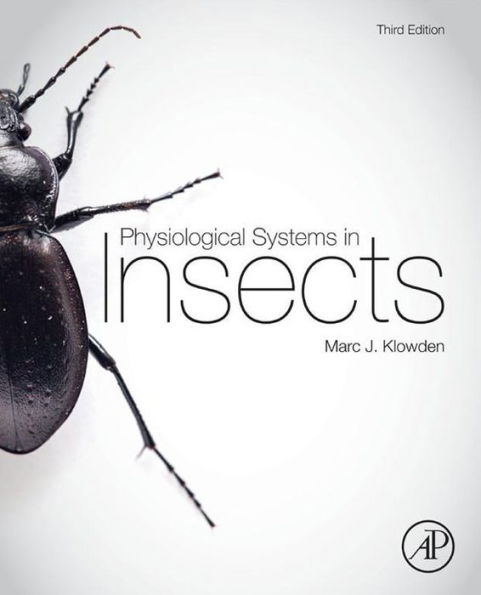

eBook
Related collections and offers
Overview
Physiological Systems in Insects discusses the roles of molecular biology, neuroendocrinology, biochemistry, and genetics in our understanding of insects. All chapters in the new edition are updated, with major revisions to those covering swiftly evolving areas like endocrine, developmental, behavioral, and nervous systems. The new edition includes the latest details from the literature on hormone receptors, behavioral genetics, insect genomics, neural integration, and much more. Organized according to insect physiological functions, this book is fully updated with the latest and foundational research that has influenced understanding of the patterns and processes of insects and is a valuable addition to the collection of any researcher or student working with insects.
There are about 10 quintillion insects in the world divided into more than one million known species, and some scientists believe there may be more than 30 million species. As the largest living group on earth, insects can provide us with insight into adaptation, evolution, and survival. The internationally respected third edition of Marc Klowden's standard reference for entomologists and researchers and textbook for insect physiology courses provides the most comprehensive analysis of the systems that make insects important contributors to our environment.
- Third edition has been updated with new information in almost every chapter and new figures
- Includes an extensive up-to-date bibliography in each chapter
- Provides a glossary of common entomological and physiological terms

Product Details
| ISBN-13: | 9780124159709 |
|---|---|
| Publisher: | Elsevier Science |
| Publication date: | 05/15/2013 |
| Sold by: | Barnes & Noble |
| Format: | eBook |
| Pages: | 696 |
| File size: | 10 MB |
About the Author
Table of Contents
Preface ix
Endocrine Systems 1
Types of Hormone Release Sites in Insects 2
Early Experiments That Set the Stage for our Current Understanding 4
Types of Hormones in Insects 7
Prothoraciciotropic Hormone 13
Ecdysteroids 18
The Juvenile Hormones 32
Other Neuropeptides Found in Insects 47
Vertebrate-type Hormones in Insects 48
References 49
Integumentary Systems 75
Insect Growth and Development 77
Strategies For Growth 77
Origins of Holometaboly 80
Instars, Stadia, and Hidden Phases 81
Structure of the Integument 83
Modified Features of the Integument 88
Chemistry of the Cuticle 90
The Molting Process 102
Endocrine Control of Molting 105
Endocrine Control of Growth 106
Endocrine Control of Metamorphosis 109
Metamorphosis and the Radically Changing Cuticle 113
References 121
Developmental Systems 137
Insect Eggs 137
Embryonic Development 147
References 164
Reproductive Systems 181
Female Reproductive Systems 182
Vitellogenesis 191
Endocrinology of Female Reproduction 195
Ovulation, Fertilization, and Oviposition 200
Male Reproductive Systems 203
Unconventional Methods of Insect Reproduction 214
Mating Systems 220
References 223
Behavioral Systems 239
Ways of Looking at Behavior 240
Genetic Basis of Insect Behavior 241
Physiology of Learning and Memory 245
Hormonal Regulation of Behavior 250
Physiology of Circadian Rhythms 253
Insect Sleep and Arousal Patterns 257
Physiology of Synchronous Behavior 257
Physiology of Polyphenisms 258
Physiology of Temporal Polyphenisms 261
Physiology of Behaviors Accompanying Metamorphosis 262
Physiology of Ecolosion Behaviors 265
Physiology of Reproductive Behaviors 269
Physiology of Behavioral Modulation By Parasites 271
References 272
Metabolic Systems 293
The Insect Alimentary Canal 294
Basic Gut Structure 296
Metabolic Processes in Insects 313
Diapause as a Metabolic Process 335
References 338
Circulatory Systems 357
Structure of the Insect Circulatory System 358
Immune Mechanisms in Insects 372
The Circulatory System and Temperature Variations 383
References 388
Excretory Systems 403
Major Excretory Products in Insects 404
Malpighian Tubules 409
Mechanisms of Malpighian Tubule Secretion 413
Hindgut and Rectum 415
Cryptonephridial System 416
Filter Chamber 418
Hormonal Control of Excretion and Osmoregulation 419
Storage Excretion 422
Other Functions of the Malpighian Tubules 423
References 423
Respiratory Systems 433
Bringing Oxygen to Insect Cells 433
The Tracheal System 437
Modifications That Increase Oxygen Uptake 445
Nonrespiratory Functions of Tracheal Systems 447
Discontinuous Gas Exchange 447
Aquatic Respiration 449
References 455
Locomotor Systems 463
Basic Structure of Insect Muscles 464
Types of Insect Muscles 474
Evolution of Insect Wings 485
Muscles Involved in Wing Movements 491
Flight Muscle Metabolism 500
Terrestrial Locomotion 505
References 512
Nervous Systems 523
Basic Components of the Nervous System 524
Evolution and Structure of the Nervous System 533
The Visceral Nervous System 537
Sensing the Environment 538
Visual Receptors 560
Visual Pigments 573
Magnetic Sensitivity 578
References 579
Communication Systems 597
Visual Communication 598
Acoustical Communication 603
Tactile Communication 611
Chemical Communication 612
Pheromones 613
Releaser Pheromones 616
Pheromone Synthesis and Release 619
Allelochemicals 622
Primer Pheromones 627
The Multicomponent Nature of Bee Communication 628
References 630
Glossary 643
Index 661
What People are Saying About This
Provides the most comprehensive analysis of the systems that make insects important contributors to our environment
